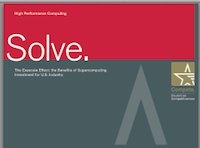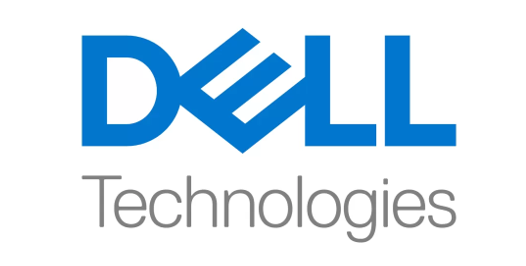 This week the Council on Competitiveness released a new report called “Solve. The Exascale Effect: the Benefits of Supercomputing Investment for U.S. Industry.” As the federal government pursues exascale computing to achieve national security and science missions, Solve examines how U.S.-based companies also benefit from leading edge computation and new technologies first funded by government. The report also explores what actions are likely to unleash greater industrial competitiveness.
This week the Council on Competitiveness released a new report called “Solve. The Exascale Effect: the Benefits of Supercomputing Investment for U.S. Industry.” As the federal government pursues exascale computing to achieve national security and science missions, Solve examines how U.S.-based companies also benefit from leading edge computation and new technologies first funded by government. The report also explores what actions are likely to unleash greater industrial competitiveness.
Key Findings:
- More than one-third of U.S. industry representatives surveyed claim their most demanding high performance computing (HPC) applications could utilize 1,000-fold increases in computing capability over the next five years;
- Software scalability is the #1 most significant limiting factor to achieve the next 10-fold improvement in performance, and it is the #2 most significant limiting factor to reach a 1,000-fold improvement;
- Industry respondents recognize that government investment in leading-edge HPC benefits their companies and industries. An overwhelming majority of respondents believe HPC is a matter of competitive survival and is critical to the future direction of their businesses. However, many respondents also note that the links between government and industry need to be strengthened.
Solve builds on over a decade of Council leadership to ensure the United States acts strategically to leverage HPC for competitiveness,” said Deborah L. Wince-Smith, President & CEO of the Council on Competitiveness. “The challenge to lead in HPC is complex and continuous, but essential to America’s economy, security and innovative capacity. The Council is proud to convene national leaders from industry, academia, the national laboratories and the federal government to meet this challenge.”
The report was developed as part of work supported by the Office of Advanced Scientific Computing Research within the U.S. Department of Energy’s, Office of Science. The Council engaged Intersect360 Research to interview more than 100 HPC-using companies in industries such as manufacturing, energy, finance, pharmaceuticals and entertainment. The interviews form the basis of Solve.
62 percent of industry respondents agreed or strongly agreed with the statement, “Past government investments in new generations of supercomputing have had a benefit on your company/industry.” Only 4 percent disagreed with the statement, demonstrating a 15-to-1 ratio of recognizing the value of government leadership.
The report also finds that companies across sectors rely on several software approaches to achieve their goals. U.S.-based firms indicate that their software use is split roughly in equal shares between in-house code, open-source software, and offerings from independent software vendors. The Council, therefore, urges improved partnerships and programs that engage industry, academia, and the national laboratories to strengthen each software approach. Solve also recommends renewed efforts to help firms not using HPC to integrate that capability into their workflow.
The co-chairs of the Council’s High Performance Computing Advisory Committee (HPCAC) note:
It is encouraging that federal computing investments to achieve national missions also advance technology in a way that benefits America’s economy,” said Dona L. Crawford, Associate Director for Computation at the Lawrence Livermore National Laboratory. “To advance that objective directly, we allocate a portion of our computing resources to industry partnerships through Livermore’s HPC Innovation Center.”
Download the Solve Report (PDF) * Listen to the Solve Podcast with Intersect360 Research
Sign up for our insideHPC Newsletter.



